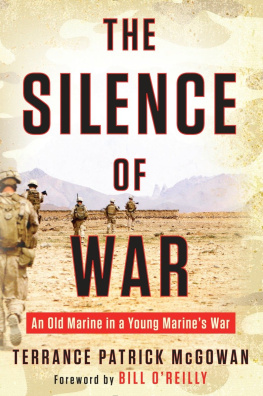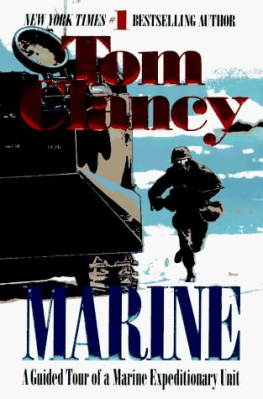The author and publisher have provided this ebook to you for your personal use only. You may not make this ebook publicly available in any way. Copyright infringement is against the law. If you believe the copy of this ebook you are reading infringes on the authors copyright, please notify the publisher at:
us.macmillanusa.com/piracy.
Saturday, August 16, 2014
A festering odor wafted from the derelict mine shaft on the edge of the remote Mojave Desert, just north of Californias Joshua Tree National Park.
Stooping to examine the ten-by-ten-foot pit, caver Luca Chiarabini winced. The stench reeked of gasoline mixed with something putrid and indistinguishable. Flashlight in hand, he scanned the darkness, but the yawning chasm was too deep for the beam to illuminate the floor of the mine. Rising to his feet, he wiped the sweat from his forehead and gazed across the vast, endless wasteland. Creosote bushes and gnarled Joshua trees dotted the desolate open desert. Jagged rock formations loomed over the ground pockmarked with abandoned mine shaftsrelics of the California gold rush.
Chiarabini, a wiry, shaggy-haired native of Italy, blinked hard and released a deep breath. Could this be it? he wondered. After all this time, have we finally found her?
For the past seven weeks, Chiarabini and his fellow volunteer cavers from the San Bernardino County Cave and Technical Rescue team had been on a mission most macabre. Teaming up with California homicide detectives, they were searching for the remains of a missing nineteen-year-old girl named Erin Corwin, the wife of a Marine.
On the morning of June 28, 2014, Erin Corwin had left her apartment at the Marine Corps Air Ground Combat Center in Twentynine Palms, California. Her husband, Marine corporal Jon Corwin, had told detectives she was headed to Joshua Tree National Park to scout scenic spots for an upcoming visit with her mother. But Erin never returned.
She was three weeks pregnant.
Evidence pointed to foul play. Detectives believed Erin had been murdered and discarded in one of the more than one thousand mines and horizontal passagesknown as aditsthat fall within the Dale, Eagle Mountain, and Brooklyn mining districts, a cluster of shuttered gold mines fifteen miles east of Twentynine Palms.
The original search area had covered approximately two thousand square miles, including Joshua Tree National Park, the Twentynine Palms Marine base, and the unincorporated community of Amboy, a ghost town off historic Route 66. Detectives had tapped a professional local caver to draft a map of the mines in the region, highlighting the ones most likely to conceal a dead body. Using forensics and electronic evidence, detectives had narrowed the search to the mining districts just outside of the park, about a two-hour drive from downtown Twentynine Palms. Aerial searches had identified more than a hundred potential burial sites.
Searchers worked in teams, breaking into crews of two and three to check and clear each of the mines. Days began as early as 3:00 a.m. as summer temperatures soared past 115 degrees. To guard themselves from the fragile state of the abandoned mines, the rescuers wore long-sleeve shirts, helmets, and protective gear.
By the seventh week, hundreds of mines had been thoroughly searched and cleared from the lists. But there was no sign of Erin. As the expansive and costly search stretched on, hope had begun to fade and resources were dwindling. The San Bernardino County Sheriffs Department decided that this was it: Saturday, August 16, would be the last day they would officially look for Erin.
We felt like we had one more shot at it, recalled San Bernardino County Sheriffs detective Daniel Hanke, one of the lead investigators on the case.
The sun was still high in the sky at about 4:30 p.m., when Chiarabini and his team headed to the very last location on their lista 140-foot deep hole in the shadows of a sheer cliff. Approaching the pit, a glimmer of light caught the attention of one of the cavers on Chiarabinis team. Near the collar of the mine, a spent brass bullet casing twinkled in the sunlight. The rescuer picked up the shell casing with a gloved hand and placed it in a plastic evidence bag. Kneeling beside the mine, Chiarabini peered into the darkness. Then he reached for the radio on his belt.
A few miles east, John Norman, coordinator for the rescue team, was clearing a different mine with his team when Chiarabinis voice crackled on the radio.
We found something. Were at site 108, Chiarabini said. Could you come over and help set up the bucket cam?
To expedite the search, Norman had created a device to record video from inside the mine using a one-gallon bucket, a generic GoPro camera, a floodlight, and model airplane batteries he borrowed from a neighbor. Dubbed the bucket cam, the device could be dropped down the shaft and record footage of the bottom of a mine, making it much easier for the team to evaluate prospective open graves.
At forty, Norman was lean with closely cropped dark blond hair that contrasted with his tan complexion. Gathering their supplies, Norman and his crew piled into the truck. After a half hour of crawling over the rocky and sandy terrain, he and his two teammates arrived at the site, joining half a dozen rescuers and sheriffs deputies already huddled around the mine.
At first glance, the mine appeared to be little more than an anonymous hole in the groundno different from the dozens of other mines they had searched. But immediately, Norman was struck by the smell. The rescuers had inadvertently stirred up the air inside the mine, and a noxious scent was now billowing to the surface.
It was awful. Everyone on the surface could smell this really bad decay sort of smell, Norman recalled. It was like gasoline and possibly some sort of human decomposition.
The vertical chute sloped gradually to one side, making it impossible to simply lower the bucket cam from the mouth of the mine. Instead, someone would need to descend into the hole, pass the gradient, dangle partway down the shaft, and lower the camera down to fish around the debris.
Any volunteers? Norman asked, imploring the other searchers.
Glancing to his left and right, Chiarabini saw no other volunteers, so he stepped forward.
Ill go down, he said. I have a mask.
A software engineer by day, Chiarabini joined the rescue team in 2010 and spent weekends volunteering on caving rescue-and-recovery missions. An intrepid adventurer, Chiarabini was typically the first to volunteer for a challenge. He retrieved from his backpack a face mask that covered his nose and mouth as the other cavers fashioned their equipment into an intricate rapelling system. A large tripod was situated above the mine. The cavers weaved a climbing rope through the tripod, latching it onto a truck. The rigging would allow Chiarabini to drop down the center of the mine and avoid touching the walls.
Belaying the rope to his harness, Chiarabini stepped backward into the hole, slowly descending into the darkness. A few feet underground, the air was dank and cooler. The clatters of crumbling rocks echoed off the walls as they tumbled to the mines floor.
When he got about twenty feet down, a gas detector on his belt alerted Chiarabini that the air was toxic and lacked oxygen. Because he was breathing oxygen through the face mask, he was safe. But the fumes stung his eyes, causing them to water.















